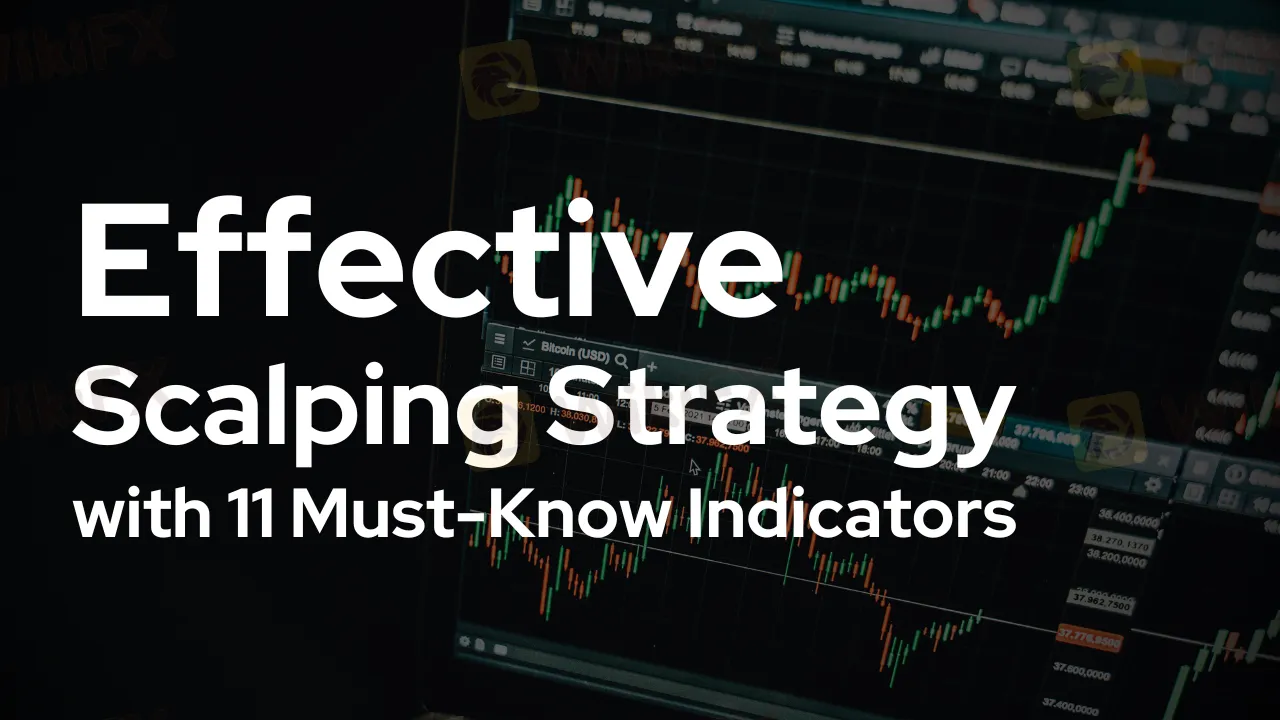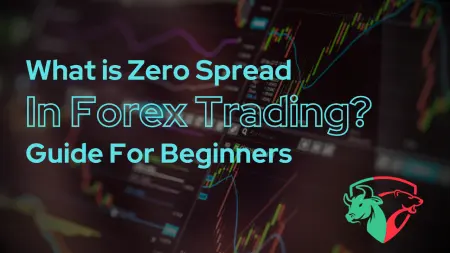简体中文
繁體中文
English
Pусский
日本語
ภาษาไทย
Tiếng Việt
Bahasa Indonesia
Español
हिन्दी
Filippiiniläinen
Français
Deutsch
Português
Türkçe
한국어
العربية
Effective Scalping Strategy with 11 Must-Know Indicators
Abstract:Discover the art of scalping with 11 vital indicators in our comprehensive guide. Learn how to make quick, consistent profits by capitalizing on small market fluctuations. Explore the pros and cons, gain insights into top indicators like Moving Averages, RSI, and Bollinger Bands, and understand the crucial factors for successful scalping. If you're ready for a fast-paced, high-intensity trading strategy, this is your roadmap to potential success in the world of scalping.

Introduction
In the world of trading, time is money, and no one understands this better than scalpers. Scalping is a fast-paced trading strategy that aims to capitalize on small price fluctuations in the market. Unlike traders who hold onto assets for days, weeks, or even years, scalpers are in and out of trades within minutes or even seconds. This article delves deep into the art of scalping, the indicators that can be employed, its advantages and disadvantages, and how it stands apart from other trading strategies like day trading.
What is Scalping?
Scalping is a trading style focusing on exploiting minor price variations in the market. Scalpers execute a high volume of trades aiming to achieve many small profits. The essence of scalping lies in quick trade execution and equally rapid exits, thereby minimizing exposure to adverse market events.
The philosophy is simple: make small profits consistently. For scalpers, the risk associated with individual trades is usually small, but the high frequency of trading can cumulatively lead to significant gains or losses. So, if you are contemplating scalping as a trading strategy, you should be prepared for a fast-paced, high-intensity environment.
Top Indicators for a Scalping Trading Strategy
Moving Averages
Moving Averages help track the average price of an asset over a specified number of periods. Commonly used moving averages include the simple moving average (SMA) and the exponential moving average (EMA). These averages help traders identify trends and potential reversal points.

Application: A trader might buy an asset when its short-term moving kicker average moves above the long-term moving average and sell when the opposite occurs. For instance, a crossover of the 50-day moving average over the 200-day moving average can indicate a potential upward trend.
Stochastic Oscillator
This is a momentum indicator that compares a securitys closing price to its price range over a specific period. When the stochastic oscillator reaches high values, it might indicate that the security is overbought, and when it's low, it could mean the security is oversold.

Application: This momentum indicator can be used to spot overbought or oversold conditions. For example, if the oscillator crosses above 80, it might be a sign to sell, suggesting the asset is overbought. Conversely, crossing below 20 can be a buy signal.
Relative Strength Index (RSI)
The RSI is another momentum oscillator, that measures the speed and change of price movements. Values over 70 typically indicate overbought conditions, while values below 30 suggest oversold conditions.

Application: Traders can use RSI to identify potential reversal points. If the RSI moves above 70, the asset might be overbought, signaling a potential sell. If it drops below 30, it can indicate oversold conditions and a potential buying opportunity.
Bollinger Bands
Bollinger Bands consist of a middle band being an N-period simple moving average (SMA), and two standard deviation lines above and below the SMA. These bands adapt to volatility and can signal potential overbought or oversold conditions.

Application: This indicator can highlight volatility and price level relative to moving averages. A common strategy is the 'Bollinger Bounce.' When the price touches the lower band, traders might consider buying, expecting the price to rebound to the middle band.
MACD (Moving Average Convergence Divergence)
The MACD is a trend-following momentum indicator. It's represented by two lines: the MACD line and a signal line. When the MACD crosses above the signal line, it can be a bullish sign, while a cross below can be bearish.

Application: The MACD line crossing above the signal line can be interpreted as a potential buy signal, suggesting the beginning of an uptrend. On the other hand, a MACD line crossing below may hint at a possible downtrend.
Parabolic SAR (Stop and Reverse)
This is a trend-following indicator that provides entry and exit points. The dots or points of the Parabolic SAR appear below the price chart during uptrends and above during downtrends, indicating the direction of the trend.

Application: Traders can set stop-loss orders based on the Parabolic SAR dots. If the dots are below the price, it's an indication to buy, and a trader might set a stop-loss at the SAR value. When the dots are above the price, it signals a sale, and traders can use the SAR value as the stop-loss level.
Pivot Points
Pivot points are used to determine overall market sentiment. They identify potential support and resistance levels. In scalping, they can be particularly useful to spot intraday price reversals.

Application: These points can help traders anticipate potential intraday price reversals. For example, if the price of an asset approaches a pivot point from below and then starts moving away, the pivot might act as a support level for the price
Volume
Volume represents the number of shares or contracts traded in a security or market. High volume indicates strong interest or activity in a particular asset, while low volume might suggest a lack of interest.

Application: In combination with price analysis, volume can confirm the strength of a trend. For instance, an upward price movement with increasing volume can signify a strong upward trend.
Candlestick Patterns
These are specific formations created by one or more candlesticks on a price chart. Patterns like the “Doji” or “Hammer” can provide insights into potential future price movements.

Application: Recognizing patterns like the “Bullish Engulfing” or “Shooting Star” can give traders insight into future price directions. For example, after noticing a “Hammer” pattern at the end of a downtrend, a trader might anticipate a bullish reversal.
Level II and Market Depth
Level II shows the range of bid and ask prices in the market. By analyzing this data, traders can get a clearer picture of supply and demand at different price levels.

Application: By analyzing the range of bid and ask prices, traders can gauge the supply and demand at specific price points. For example, a large number of buy orders at a particular price might act as a support level for an asset.
Spread Monitoring
In scalping, even small differences between the bid and ask price (the spread) can impact profitability. Monitoring the spread ensures that traders aren't entering trades where the cost of doing so might outweigh potential gains.

Application: Before entering a trade, scalpers should ensure the spread (difference between buy and sell prices) isn't too wide. If the spread is too broad, the asset must make a more significant movement in the trader's favor to become profitable.
Pros and Cons Of Scalping
Pros of Scalping
Quick Profits
Scalping involves capturing small price gaps that are generally created by order flows or spreads. Because you're not aiming for big gains, your profits can stack up quickly if you trade efficiently.
Lower Risk Exposure
Each trade has a very short duration, reducing the risk of experiencing adverse market events that could impact your position.
No Overnight Risks
Because scalpers generally close all positions before the trading day ends, theres no overnight risk like with other longer-term trading strategies.
Abundant Trading Opportunities
Markets are often more volatile in shorter time frames, providing numerous trading opportunities. This is especially beneficial when the market is not trending in a specific direction over the long term.
Simplified Technical Analysis
Scalpers typically rely on technical indicators that are focused on short-term movements, which can be easier to follow than long-term analyses.
Emotional Discipline Training
The rapid pace of scalping can help you build emotional resilience and discipline since you must adhere strictly to your trading plan to be successful.
Cons of Scalping
High Transaction Costs
Each trade incurs a fee, and given the high number of trades, these costs can accumulate quickly, eating into your profits.
Requires Significant Time Investment
Scalping requires you to monitor financial markets closely and make quick decisions. This is time-consuming and emotionally taxing.
Speed is Crucial
A slow internet connection or a lag in order execution can be detrimental. Scalping requires a reliable, high-speed internet connection and a platform that allows for rapid order execution.
High-Stress Environment
The need to make quick decisions, often under time pressure, can lead to emotional burnout if youre not careful.
Small Profit Margins
Scalping typically involves smaller profit margins. As such, it may take a longer time to accumulate significant profits, especially after accounting for trading fees.
Expertise and Quick Decision-Making Needed
Scalping is not necessarily beginner-friendly. It requires a deep understanding of market conditions, quick analytical skills, and prompt action.
Understanding these pros and cons can help you decide whether scalping is a trading strategy that aligns with your financial goals, risk tolerance, and lifestyle. Like any trading strategy, scalping is not one-size-fits-all and requires a disciplined approach to mitigate inherent risks.
Related article:
Essential Factors to Consider for Successful Scalping in Trading
Scalping in the trading world demands not just strong discipline, but also an unyielding commitment of time. Unlike trading strategies that focus on longer time frames, where you can monitor opportunities from a distance, scalping requires your undivided attention.
This technique involves swift entry and exit points, which can manifest and vanish in the blink of an eye. Therefore, it's crucial to be glued to your trading interface. If you have other commitments, like a day job, this may not be the trading style for you. Long-term strategies, offering larger profit margins, could be a better match.
Though scalping sounds enticing, its a challenging strategy to master effectively. Studies indicate that frequent trading often leads to accelerated financial losses and a downturn in equity. For most people, focusing on longer-term trades can be more fruitful and can significantly reduce the time and stress linked to trading.
Key to scalping is the ability to act promptly to market fluctuations and having the discipline to abstain if the perfect timing is missed. Ineffective risk management, like neglecting stop-loss measures, and impulsively pursuing trades are primary reasons why many scalpers fail. While the allure of spending less time in the market is tempting, the risk of quick losses due to sudden market changes is also high.

Disclaimer:
The views in this article only represent the author's personal views, and do not constitute investment advice on this platform. This platform does not guarantee the accuracy, completeness and timeliness of the information in the article, and will not be liable for any loss caused by the use of or reliance on the information in the article.
Read more

OctaFX Flagged by Malaysian Authorities
OctaFX has been officially listed on warning lists by both Bank Negara Malaysia (BNM) and the Securities Commission Malaysia (SC). These alerts raise serious concerns about the broker’s status and whether it is legally allowed to operate in Malaysia.

Errante Broker Review
Established in 2020, Errante has rapidly gained recognition in the forex and CFD trading industry. With a commitment to transparency, client protection, and a diverse range of trading services, Errante caters to both novice and experienced traders. This review provides an in-depth look at Errante's offerings, regulatory standing, trading conditions, and more.

IronFX Broker Review 2025: A Comprehensive Analysis of Trustworthiness and Performance
IronFX Review 2025: Explore the broker’s AAAA WikiFX rating, global regulations, and $500,000 trading prize. Is it trustworthy or a scam? Dive into our transparent analysis!

Why Your Worst Enemy in Trading Might Be You
Be Honest With Yourself: Are You Slowly Destroying Your Trading Account?
WikiFX Broker
Latest News
SkyLine Guide 2025 Malaysia: 100 Esteemed Judges Successfully Assembled
Vantage Markets Review 2025: Trusted Forex and CFD Trading Since 2009
TradingPRO: A Closer Look at Its Licences
The world could be facing another ‘China shock,’ but it comes with a silver-lining
A Guide to Intraday Forex Trading You Can't Miss Out
CONSOB Blocks Access to 13 Unauthorized Investment Websites
Why STARTRADER Is Popular Among Traders?
New SEBI Regulations on Intraday Trading
Everything You need to know about Barath Trade
OctaFX Flagged by Malaysian Authorities
Currency Calculator



